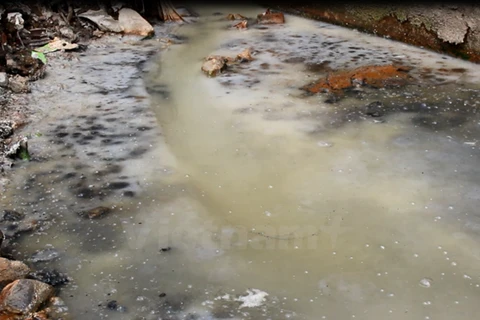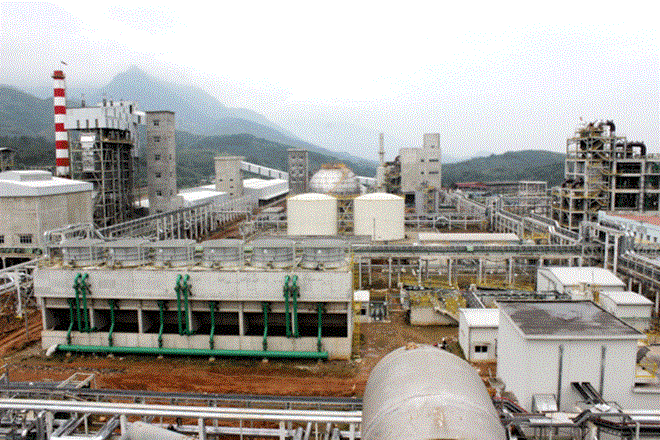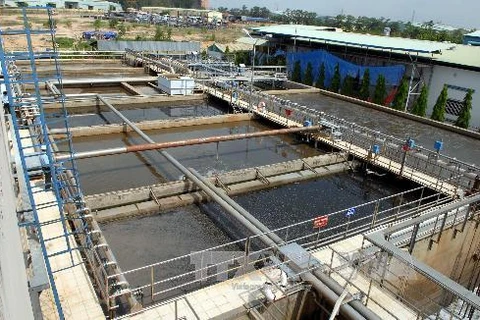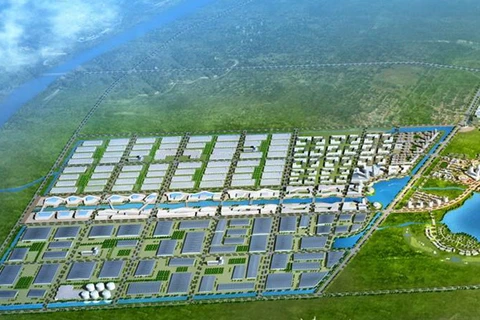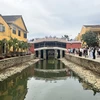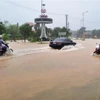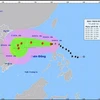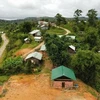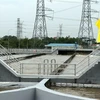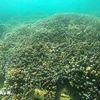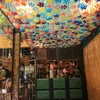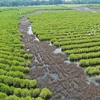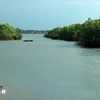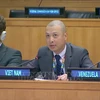 The Binh Hung sewage treatment plant in Binh Chanh District, funded with ODA loans, has a capacity of 141,000 cubic metres a day (Source: VNA)
The Binh Hung sewage treatment plant in Binh Chanh District, funded with ODA loans, has a capacity of 141,000 cubic metres a day (Source: VNA) Nguyen Thi Thanh My, deputy director of the city’s Department of Natural Resources and Environment, said the population boom and an increase in the number of industrial zones had contributed to the backlog.
More than 13 industrial complexes in HCM City do not have waste collection and treatment facilities.
Most of them are located in the middle of residential areas in districts 7, 8, 12, Binh Tan, Thu Duc, Binh Chanh, Cu Chi and Hoc Mon.
Other industrial parks and industrial complexes have wastewater treatment systems, but they do not operate efficiently.
In addition, the city has 42 residential area projects of at least 20 hectares each. By the end of last year, 20 of the projects had opened, but only half had wastewater treatment system, according to My.
Under a plan, HCM City is building 12 wastewater treatment plants near canals and rivers.
To date, only the first phase of the Binh Hung wastewater treatment plant has been built, with a capacity of 141,000 cubic metres a day.
The plant collects and treats wastewater in districts 1, 3, 5 and 8 and Tau Hu-Ben Nghe and Đoi-Te canals.
Investment procedures on six plants have yet to be completed, while site clearance has not started.
The city has operated the Binh Hung Hoa wastewater treatment station with a capacity of 30,000 cubic metres a day near Tan Hoa-Lo Gom canal.
The Binh Hung Hoa wastewater treatment station and Binh Hung plant, whose capacity totals 171,000 cubic metres a day, can treat only 13.2 percent of household wastewater in the city.
Local authorities attribute the problem to financial turmoil and a heavy reliance on foreign investment, which has slowed down progress of many wastewater treatment projects.
My said the city had asked the Steering Centre of Urban Flood Control Programme to implement projects on schedule and call on investment in the field.
The Department of Natural Resources and Environment is responsible for improving inspection over sources discharging wastewater and strictly handling violators of the Environmental Protection Law.
It also is responsible for forcing all new urban areas with an area of 20 hectares or more to build wastewater treatment systems, she said.
The city is calling for investment in 12 wastewater treatment plants to treat three million cubic metres of wastewater per day in the city.
The Department of Planning and Investment is preparing regulations for environmental projects, which will be carried out under a public private partnership (PPP).
A number of investors have offered suggestions on plans to develop wastewater treatment facilities.
In 2015, the consortium of Phu Dien Construction Trading and Investment JSC and SFC Vietnam Investment Development for Environment Corp. invested nearly 1.9 trillion VND (84.9 million USD) to build the Tham Luong-Ben Cat wastewater treatment plant in district 12, under the Build-Transfer (BT) mode.
Also in 2015, the Trung Nam Construction and Investment JSC proposed building the North Sai Gon plant under a public-private partnership with an estimated investment of hundreds of millions of USD.
Meanwhile, the first phase of Nhieu Loc-Thi Nghe wastewater treatment plant was built last year with a capacity of 480,000 cubic metres per day at a cost of 478 million USD.
Luu Van Tan, of the Steering Centre for Urban Flood Control, said each of the 12 wastewater treatment projects that need investment has around 10 registered investors, both local and foreign.
HCM City is trying to choose the best investors to ensure mutual benefits for the city, investors and residents.
Vietnam has a total of 15 urban areas, 298 industrial parks and 878 industrial complexes.
However, up to one-third of the export processing zones, industrial parks and industrial complexes do not have sufficient waste treatment systems.-VNA
VNA
